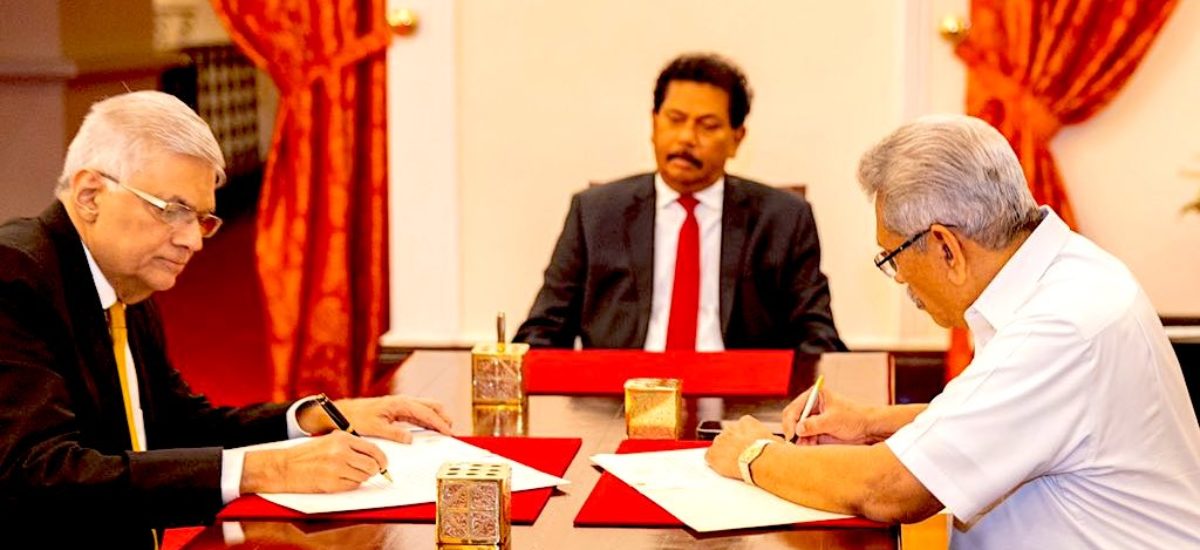Photo courtesy of Tribune India
On July 9, an unprecedented number of Sri Lankan protesters marched on the president’s official residence. They demanded one thing: his immediate resignation for his role in causing the most devastating economic crisis the country has ever faced. Despite brutal retaliation by law enforcement and security forces, the protesters stormed the premises. In the face of such enormous pressure, and for the first time since island wide protests began more than one hundred days ago, the president signalled an intent to resign.
What happens if President Gotabaya Rajapaksa does in fact resign?
The process is governed by article 40 of the Constitution and the Presidential Elections (Special Provisions) Act of 1981 (the ‘Act’). It is parliament and not the people that elects the next president. Article 40(1)(a) of the Constitution and section 3(1) of the Act provide that parliament shall elect one of its members to the office of president. That election must take place within one month from the date of the vacancy. The new president will then serve the remainder of the current presidential term, which ends in 2024. The entire process, if followed properly, and in good faith, is straightforward. It can be explained in five steps.
Step 1:
If the president resigns, article 40(1)(c) of the Constitution provides that the prime minister (or the speaker if there is a vacancy in the office of prime minister) shall act in the office of president. This appointment is automatic and lasts until a new president is elected by parliament.
Step 2:
Section 4 of the Act provides that once the president resigns, the Secretary General of Parliament must summon parliament to meet within three days of the vacancy. The Secretary General must inform the members of parliament of the date and time fixed for such a meeting.
Step 3:
When parliament meets as scheduled, section 5 of the Act provides that the Secretary General must fix a deadline to receive nominations for the office of president. The deadline for nominations must be a date not earlier than 48 hours and not later than seven days from parliament’s initial meeting.
Step 4:
Nominations need to be handed in by the deadline. Section 6(4) of the Act provides that if only one member is nominated, the Secretary General must declare that member the president. If more than one member is nominated, parliament must fix a date for an election. Such a date cannot be later than forty-eight hours from the time of receiving nominations. Unfortunately, it is difficult to compel parliament to hold such an election. However, the statutory duty is clear, and parliament must in good faith hold such an election.
Final Step:
If more than one candidate is nominated, an election needs to be held. At the appointed date of the election, each member of parliament is permitted to cast their vote for a candidate. Members can also cast second and third preference votes.
Section 11 of the Act provides that if a candidate receives more than one half of the valid votes cast, the Secretary General must declare such candidate elected to the office of president.
Section 12 of the Act sets out the procedure if no candidate receives more than fifty percent of the valid votes. For instance, if three or more candidates are nominated, the candidate with the least number of votes is eliminated from the contest. The second preference votes of the members who voted for that eliminated candidate are then counted and added to the remaining candidates’ tally. The procedure eventually ensures that a candidate is elected to the office of president.
If President Rajapaksa does in fact resign on July 13 as promised in his communication to the Speaker, the people’s desperate dream that began earlier this year would have finally come true. Sri Lanka will, for a short period of time, have an acting president. Then, if all goes according to plan, and law, a new president will be elected by parliament before July is through.
A longer version of this article appeared in Himal Southasian


